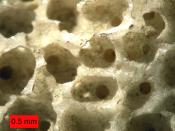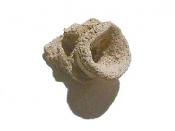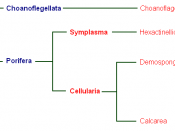The Classification and Evolution of Sponges and Starfish
By
Abstract
For the purpose of this research project the subjects shall be cushion starfish a member of Phylum Echinodermata and Mycale sponge a member of Phylum Porifera. Both are members of Kingdom Animalia and invertebrates. The relative ages of each are Pre-Cambrian and early Cambrian to Ordovician respectively. Commonalities in physical characteristics and ancestry are obvious and inferred. These inferences are substantiated by included data and phylogenic tree depicting familial relationships as they pertain to these subjects. Also discussed are the specific physical traits depicting the differences in the Species as well as the classification of those Species into Kingdom, Phylum, and so on.
The first Species I will review is referred to commonly as Mycale, formerly known as Esperella. The Latin name for Mycale is Fibrexilis, it is a member of Phylum Porifera and Kingdom Animalia, Class Demospongiae, Order Poecilosclerida, Family Mycalidae, Genus Mycale, Species Fibrexilis.
Mycale is a small encrusting sponge, with poor skeletal development and is yellowish and brown in color. The existence of Mycale was first reported in 1937 by H.V. Wilson (Wilson, H.V., 1937).
Porifera are among the oldest known fossils dating from the late PreCambrian era. They are known to comprise over 900 different types of fossils, and currently have over 5,000 different sponge Species classified in Phylum Porifera. (Introduction to Porifera, http://www.ucmp.Berkely.edu/porifera/porifera.html).
Because of their simple and unique design, they lack true tissues, but are rather an association of cells and are therefore referred to as Parazoans. They do produce a skeletal structure through the use of spicules and spongem. Mostly all of Phylum Porifera are marine animals. They have a unique feeding system that lacks a mouth. They are filter feeders. The cells of sponges have small holes in the skin...


